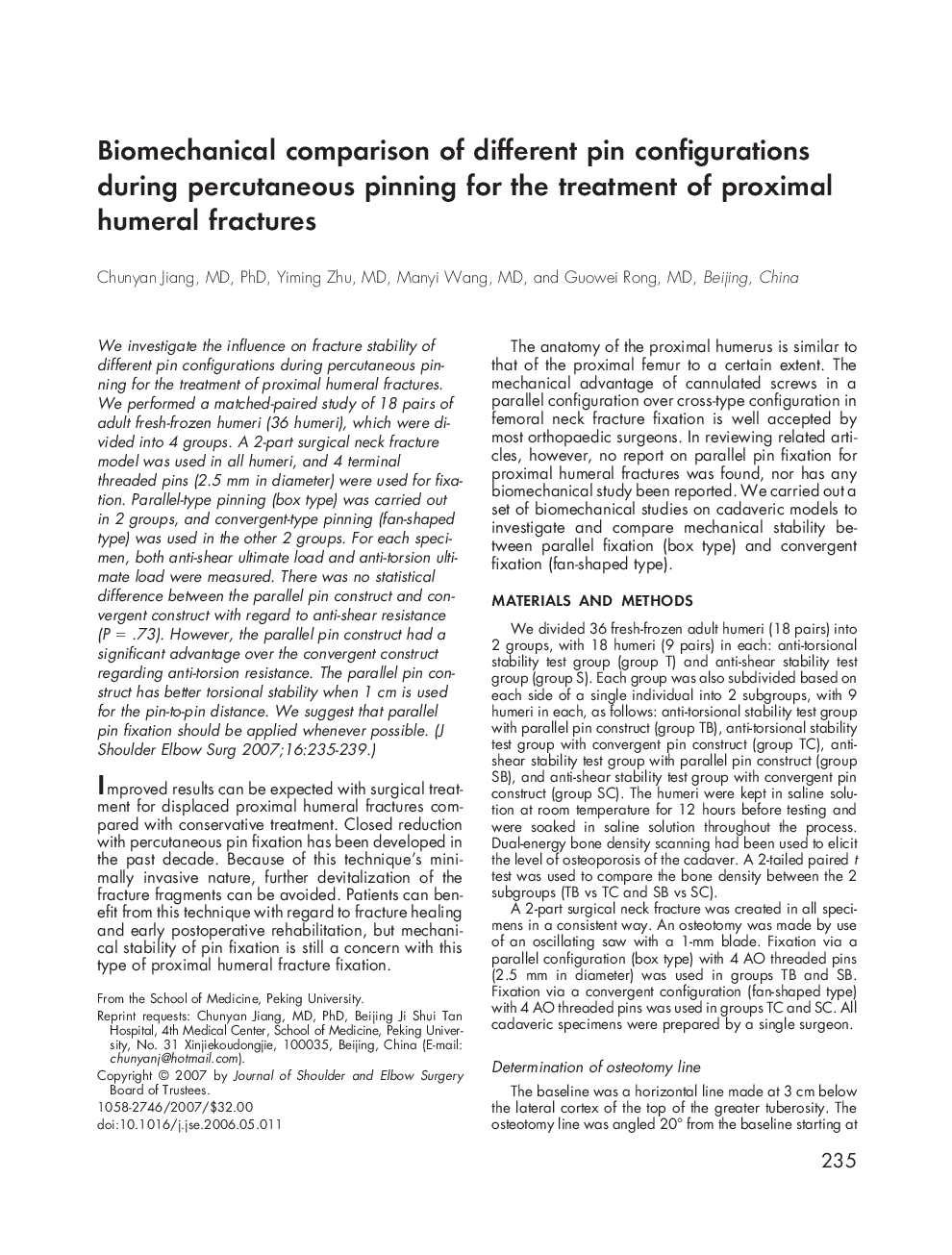| کد مقاله | کد نشریه | سال انتشار | مقاله انگلیسی | نسخه تمام متن |
|---|---|---|---|---|
| 4076276 | 1267081 | 2007 | 5 صفحه PDF | دانلود رایگان |

We investigate the influence on fracture stability of different pin configurations during percutaneous pinning for the treatment of proximal humeral fractures. We performed a matched-paired study of 18 pairs of adult fresh-frozen humeri (36 humeri), which were divided into 4 groups. A 2-part surgical neck fracture model was used in all humeri, and 4 terminal threaded pins (2.5 mm in diameter) were used for fixation. Parallel-type pinning (box type) was carried out in 2 groups, and convergent-type pinning (fan-shaped type) was used in the other 2 groups. For each specimen, both anti-shear ultimate load and anti-torsion ultimate load were measured. There was no statistical difference between the parallel pin construct and convergent construct with regard to anti-shear resistance (P = .73). However, the parallel pin construct had a significant advantage over the convergent construct regarding anti-torsion resistance. The parallel pin construct has better torsional stability when 1 cm is used for the pin-to-pin distance. We suggest that parallel pin fixation should be applied whenever possible.
Journal: Journal of Shoulder and Elbow Surgery - Volume 16, Issue 2, March–April 2007, Pages 235–239